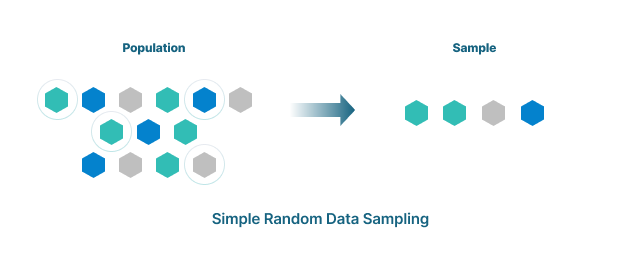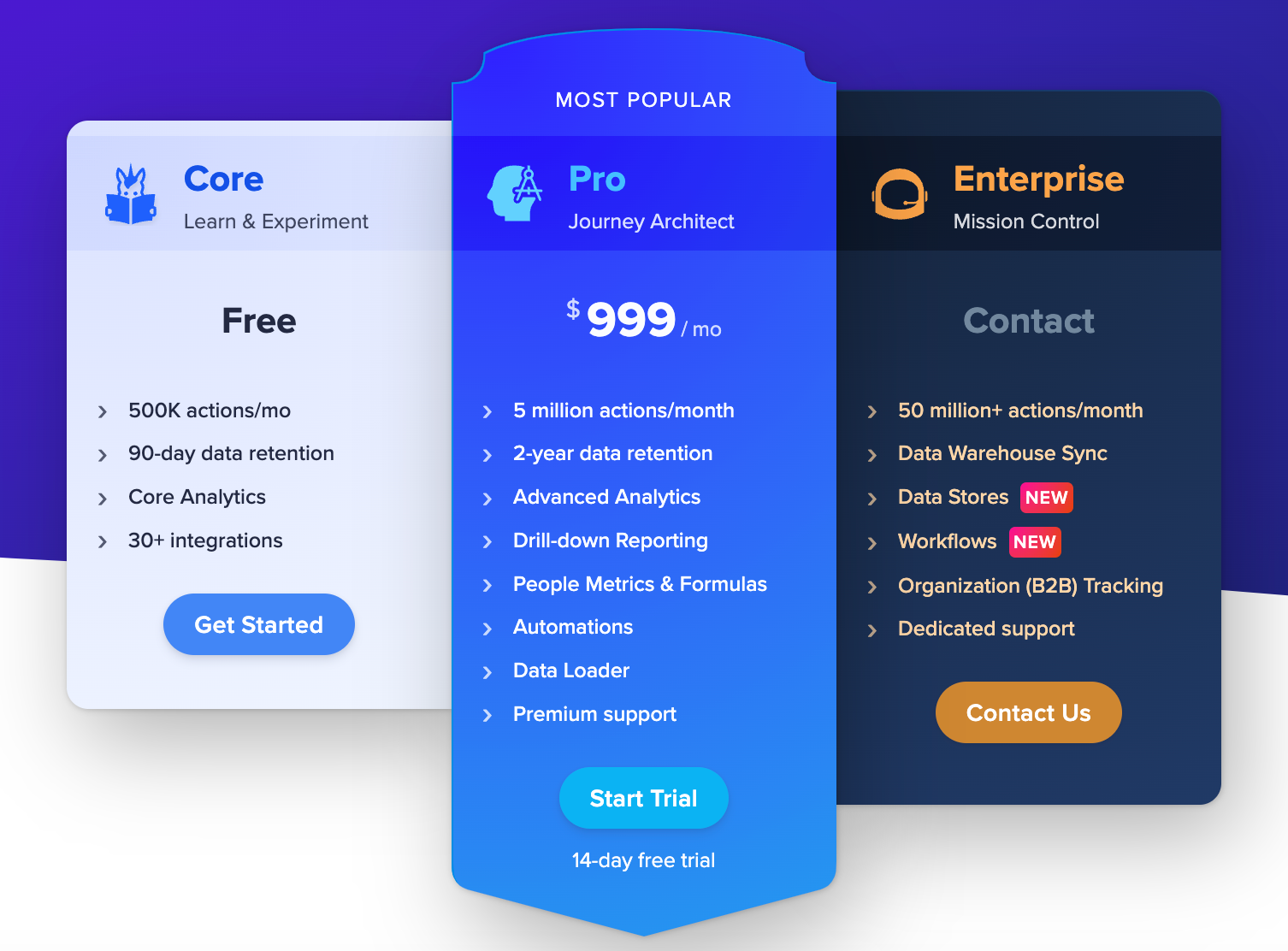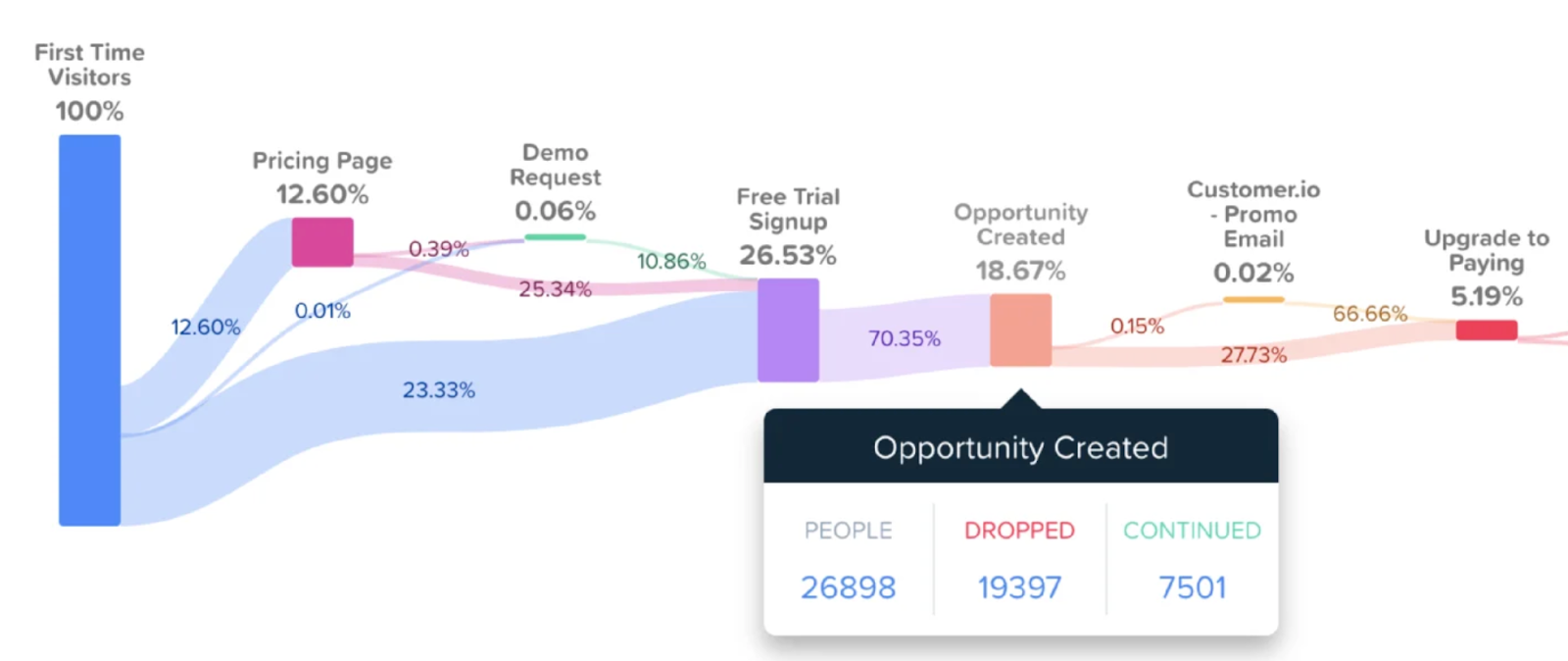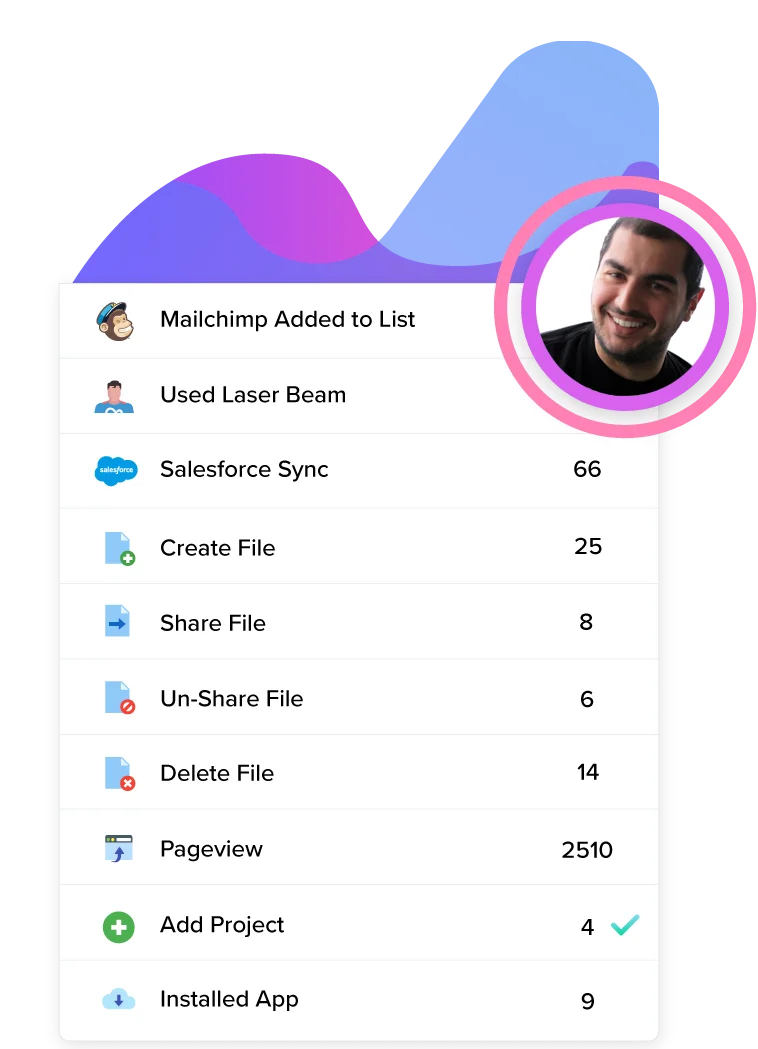One major draw to Google Analytics 4 is its free plan. While this plan is acceptable for general traffic data, it's essential to be aware of its data collection limitations.
1. Data Sampling
If you're on any Google Analytics standard plan other than their Analytics 360, which is Google Analytics premium, they use something called data sampling.
According to Google, "In data analysis, sampling is the practice of analyzing a subset of all data in order to uncover the meaningful information in the larger data set.
 Source: Egnyte
Source: Egnyte
For example, if you wanted to estimate the number of trees in a 100-acre area where the distribution of trees was fairly uniform, you could count the number of trees in 1 acre and multiply by 100, or count the trees in a half-acre and multiply by 200 to get an accurate representation of the entire 100 acres."
In other words, data sampling can be wildly inaccurate. We encourage you to read more about "How accurate is Google Analytics 4?" but it's necessary to know that their free version uses sampled data. If you want unsampled data, you'll need to get on the Google Analytics 360 suite paid version.
2. Custom Properties
There are also limitations on the type of data Google Analytics free plans can collect. Generally, this Google product tracks browser, session, and device data and doesn't focus on individual users.
There are ways, although not easy, to track individual users with Google Analytics free. However, these users cannot be identified by Personally Identifiable Information (PII) and can only have up to 20 non-PII custom properties for the free version and around 50+ for the 360.
3. Hit Limits
Additional limitations with the free plan are access to hit-level data and the number of hits. The free version of Google Analytics data is limited to 10 million hits/month compared to around 1 billion hits/month for the paid version.
4. Report Limits
The free plan only allows for about 50k rows of sampled data, while the 360 paid version removes this limit. Other report limitations include custom reports and custom funnels. These are only accessible in their 360 plans of the Google marketing platform.
So creating a custom funnel with custom steps is not possible with the Google Analytics free plan.
5. Integrations
For integrating with Google BigQuery, Google Cloud, Google Search Console, Salesforce Marketing Cloud, Search Ads 360, or Campaign Manager, all these require a 360 plan. Historical data from other sources are limited in both versions. There are different 3rd party integrations for the free plans, but these are not native integrations.
Only Google Analytics 360 includes native integrations with other platforms.
6. Cost of Google Analytics 360
If you want their flagship plan, that's going to run about $150,000/year -- no, those zeros are not typos. Access to non-sampled data and native integrations does not come cheap with this Google marketing platform.
 Source: Google Search
Source: Google Search
7. Which Plan Is Right for You?
Depending on your budget and how much traffic your site generates will help you decide which plan is best. However, it's worth examining other alternative tools that have the best of both without the enormous price tag of Google products.
A platform such as Woopra offers a free and paid plan that is a fraction of the Google price, with a suite of features that rivals Google Analytics 360.

Even with the free plan, Woopra never uses data sampling and focuses on individual user profiles which you don’t get with Google Digital Analytics.
This means each visitor to your site has their own profile with a complete history of their tracked behavior. The added ability to send PII information to identify users, plus the several built-in integrations available, make it possible to understand your user's complete journey on your site.
Create unlimited custom reports to analyze your users from their first visit from a marketing campaign to feature usages, all the way to becoming a paying customer.

With alternative platforms such as Woopra available in today's analytic landscape, there are far better options than Google web analytics to consider.
Other Reasons to Choose Woopra as Your Data Analytics Platform
Again, Woopra is an end-to-end customer journey analytics tool that serves up big-picture insights. While Google Analytics 4 offers fairly comprehensive data and Google 360 is extremely comprehensive, Woopra outshines GA 4 with its features and costs far less than what the paid version of Google Analytics offers.
If one of your main goals is to optimize the customer journey and eliminate pain points that are getting in the way, Woopra is an excellent web analytics platform.
Next, Woopra goes incredibly granular with customer engagement reports. From basic information like traffic volume and page views to knowing which channels are leading to the most sign-ups to long-term retention, Woopra puts you in the driver’s seat with its user-friendly data visualization.

In terms of behavioral segmentation, Woopra has standard Google Analytics beat there as well. With Woopra, you can break down your audience into fully customized segments to analyze behavior from all angles, with some examples including email opens, free trial sign-ups, and new feature usage.
This is perfect for giving you a crystal clear understanding of how different segments are interacting with your digital marketing campaign and products. Armed with these custom metrics, you can refine each individual element to make the customer experience as good as it can possibly be — all while maintaining data freshness and data privacy.
Common Questions
- Can Google Analytics Track Individual Users?
- How Accurate Is Google Analytics?
- What Data Does Google Analytics Collect?
- Does Google Analytics Use Cookies?
Use Cases
- How to Use Google Analytics for Marketing
- Tracking Facebook Ads in Google Analytics
- Google Analytics and Salesforce
- Google Analytics and Marketo
- Hubspot vs Google Analytics
Product Review and Costs